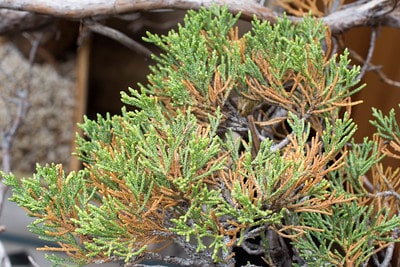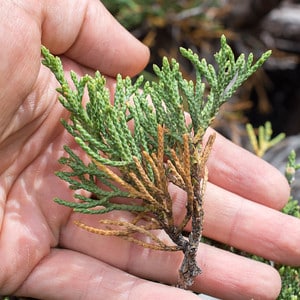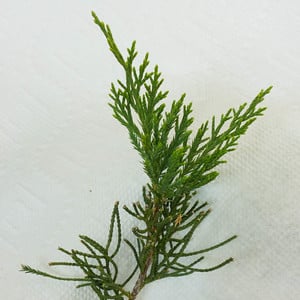A recent hot spell left its mark on a number of trees in my garden. On the day temperatures peaked, brown needles appeared on some Sierra junipers.

Brown needles on Sierra juniper
While brown needles can be scary, it really depends on which needles turn brown. If the old needles turn brown, it’s good to note, but not necessarily cause for concern.

New growth is green, old needles are brown
Seeing the contrast in needle color reminded me of some of the first bonsai instructions I ever heard – “remove the old growth from junipers before wiring.” I remember at the time finding it difficult to distinguish the new growth from old. Looking at these sierra junipers makes it easy to see which is which. When cleaning up junipers, these old needles can safely be removed whether they are green or brown.

The old needles can be safely removed
Another clue that can help distinguish new growth from old is found at the foliage tips. Green and healthy tips indicate young, active foliage. Foliage with brown, grey or dull-green tips indicate older shoots that we can safely remove.
I saw an interesting example of this at a recent Bay Island Bonsai workshop. A member was working on a juniper that had been pinched by the previous owner to the point where it had become quite weak. The new owner left the tree alone while it regained health and was now going about the cleanup. As you can see from the photo below, none of the pinched foliage was growing – the only healthy shoots emerged from the end of the branch.

New growth emerging from the branch tip
This may not cause problems if you want the branch to be longer, but if you want to keep growth compact – the typical rationale behind pinching – it can be counterproductive. As the old foliage has stopped growing, it’s safe to remove it and proceed with styling the tree using the healthy foliage at the end of the branch.
Subscribe to Bonsai Tonight
New Posts Delivered Every Tuesday and Friday
Todd says
But what do you do if you don’t want it to get longer? How can you encourage the closer-in, older green to bud, so you can eventually cut the tip back?
Thanks, your info is always great…
Jonas Dupuich says
Hi Todd – thanks for the note. Michael Hagedorn has a good answer: http://crataegus.com/2012/08/26/how-to-pinch-junipers/
paul3636 says
Slip-potted a ROR blue rug juniper and removed old needles about 3 days ago and later saw your message. Nice to know I did it correctly. :>)
anijhuis says
Excellent post and great referral to M Hagedorn’s post, I would like to add one thing here.
There is a correlation between shoot and root growth the new growth tips (meristem) produce hormones (cytokinins and auxins) by pinching out, these hormones are removed. Cell growth is reduced and root production is stopped.Plant hormones control root growth and development.